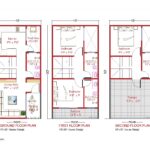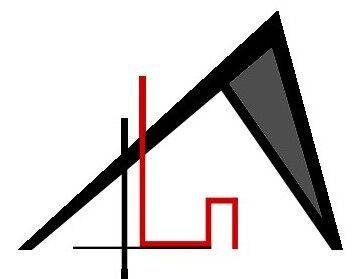What are elements of design?
The element of design are the basic components used as part of any composition. They are the objects to be arranged, the constituent parts used to create the composition itself. In most situations the elements of design build upon one another, the former element helping to create the latter.
- Point
- Line
- Shape
- Form
- Color
- Texture
- Pattern
Point –
Geometry defined a point as that which has no parts; therefore a point occupies nil space. We will take a point as an infinitesimal circle. A point is also defined as “ that exists but does not occupy any space ”, i.e., it has no dimensions. Length or height, breadth and width are termed dimensions. The fact of point being dimensionless is quite puzzling.
A point marks a position in space. Conceptually, it has no length, width or depth, and is therefore static, centralized and directionless. As the prime element in the vocabulary of form, a point can serve to mark:
- The two ends of line
- The intersection of two line
- The meeting of lines at the corner of a plane or volume
- The center of a field
Although a point has neither shape nor form, it begins to mark its presence felt when placed within a visual field. At the center of its environment, a point is stable and at rest, organizing surrounding elements about itself and dominating its field. When the point moves off-center, however its field becomes more aggressive and begins to compete for its visual supremacy. Visual tension is created between the point and its field.

Line –
A line is the visible trace of a moving point. It has length without breadth or thickness. Hence the line is dependent on the point. Movement is the real domain of the line, the point is static. The line can be extended in either direction infinitely for it is not bound to a form or a center. The line is accepted as a basic element because the process that created it is not apparent.
Types of line
A line is one dimensional. There is nothing else one dimensional. Because of this quality it points towards, indicates direction, and leads eyes to. There are many types of lines. But we can divide them into two types on the basis of their POSITION & SHAPE.
Position wise– Position wise, lines can either be vertical, horizontal or diagonal.
Shape wise– basically, lines can be divided into three types on the basis of their shape: Straight, Curved, Compound.
Shape –

You need minimum three lines to create a shape or plane which is a triangle. But there is an exception- a circle is created by one single curved line.
There are three geometrical organized basic shapes which are also known as regular shapes:
- Square- A plane figure having four equal sides and four right angles.
- Circle- A plane curve every point of which is equidistant from a fixed point within the curve.
- Triangle- A plane figure bounded by three sides and having three angles.
All other shapes are primarily composed of these basic shapes.
Form –

“When a point moves, it creates a line, line creates a shape, and shapes creates a form. So in a way things come out of nothing”. This is the mysterious and mystifying act of creation.
In art and design, we use the term to denote the formal structure of a work- the manner of arranging and coordinating the elements and parts of a composition so as to produce a coherent image.
In other context of this study, form suggests reference to both internal structure and external outline and the principle that gives unity to the whole. While form often includes a sense of three-dimensional mass or volume.
There are two types of form:
- Regular forms–
Regular forms refer to those whose parts are related to one another in a consistent and orderly manner. They are generally stable in nature and symmetrical about one or more axes. The sphere, cylinder, cone, cube and pyramid are prime examples of regular forms.
- Irregular forms–
Irregular forms are those whose parts are dissimilar in nature and related to one another in an inconsistent manner. They are generally asymmetrical and more dynamic than regular forms. They can be regular forms from which irregular elements have been subtracted or result from an irregular composition of regular forms.
Color –

Color is one of the most powerful elements. It has tremendous expressive qualities. Understanding the uses of color is crucial to effective composition in design and the fine arts. Our awareness of color is conditioned by our environment, our culture.
Color can make a room beautiful. Color can set the mood. It can make a room warmer or cooler, larger or smaller. It can hide unsightly features or call attention to the center of itself. Even with the simplest furnishing, the proper use of color can transform a room.
Whatever the source, the color will have a certain hue, intensity and value.
Hue– hue is the named color such as red or blue.
Intensity– intensity refers to the purity of the color.
Value– value refers to the amount of black or white mixed into the pure color.
Texture –

Texture is the surface quality of a shape- rough, smooth, soft, hard, glossy etc. Texture can be physical or visual.
Texture is used to create surface appearance, and relates to the physical make-up of a given form. Texture often refers to the material that sometimes is made of, and can be created using any of the elements previously discussed. Texture is both a visual and a tactile phenomenon.
Categories of texture
Real Texture is the actual texture of an object. Artist may create real texture in art to give it visual interest or evoke a feeling. A piece of pottery may have a rough texture to make it look like it is machine made.
Implied Texture is where a two-dimensional piece of art is made to look like a certain texture but in fact is just a smooth piece of paper. Like a drawing of a tree trunk may look rough but in fact it is just a smooth piece of paper.
Pattern –

When a cluster or element repeats itself after certain intervals, it is termed pattern.
Related posts-
- 20X60 House Plan 3 BHK | East Facing House Design | 1200 Sq. Ft.
 20×60 House Plan 3 BHK | 20 by 60 House Plan East Facing | 20*60 …
20×60 House Plan 3 BHK | 20 by 60 House Plan East Facing | 20*60 …Read more “20X60 House Plan 3 BHK | East Facing House Design | 1200 Sq. Ft.”
- 50 x 60 Duplex House Plan | 5 BHK with Two Car Parking | 3000 Sq. Ft.
 50 x 60 Duplex House Plan | 50 x 60 House Plan South Facing with …
50 x 60 Duplex House Plan | 50 x 60 House Plan South Facing with …Read more “50 x 60 Duplex House Plan | 5 BHK with Two Car Parking | 3000 Sq. Ft.”
- 25X50 House Plan | 2 BHK with Car Parking | 1250 Sq. Ft. House Design
 25X50 House Plan | 25 * 50 House Plan 2 BHK | 25 * 50 …
25X50 House Plan | 25 * 50 House Plan 2 BHK | 25 * 50 …Read more “25X50 House Plan | 2 BHK with Car Parking | 1250 Sq. Ft. House Design”
- 20×60 House Plan 3 BHK | 1200 Sq. Ft. House Design | Free Pdf
 20×60 House Plan 3 BHK | 20 by 60 House Plan with Car Parking | …
20×60 House Plan 3 BHK | 20 by 60 House Plan with Car Parking | …Read more “20×60 House Plan 3 BHK | 1200 Sq. Ft. House Design | Free Pdf”
- 15×30 House Plan 3 BHK | 3 Storey House Plan | 450 Sq. Ft. House Design
 15×30 House Plan 3 BHK | 15×30 3 Storey House Plan | 15 by 30 …
15×30 House Plan 3 BHK | 15×30 3 Storey House Plan | 15 by 30 …Read more “15×30 House Plan 3 BHK | 3 Storey House Plan | 450 Sq. Ft. House Design”

